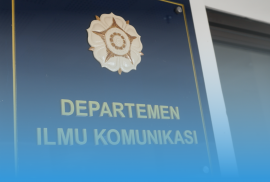What flashes in your mind when you hear of the Indonesian “traditional market”? Its inexpensive goods? Its crowdedness? Unhygienic environment? Maybe those are the words we often use to stigmatize traditional markets. With the initiatives to rebrand it, our three speakers in Ngopi #4 (Sunday, 5th July 2020) think the way through to change traditional market’s branding image to be what is called People’s Market. Why’s that?
Traditional market, aside from the stigmas it got from the community, has to face many fundamental problems. Some of them are the lacking quality of human resources, displacement by malls and modern markets, pretentious revitalizations by the government, and the inadequate involvement of its traders to revive the institutional structure. Rebranding “traditional markets” into “people’s markets” are expected to be able to present a new image in the community, which of course must be accompanied by innovation both in terms of buying and selling transactions and institutional structure.
Moreover, the occurrence of Covid-19 pandemic increasingly makes the problems above amassed, namely by the potentials of coronavirus spreadings and escalation of positive cases found in the market. However, Hempri Suyatna (lecture in the Department of Social Development and Welfare UGM) actually sees some potentials, challenges, and opportunities that emerged during the pandemic. People’s market, as a source of daily food needs with low price offers, certainly could thrive if it can innovate and adapt with its new environment. Online shopping systems and activity control with health protocols are two innovation models that are most feasible to apply.
Miss Rindu Sanubari Mashita Firdaus (researcher at Center for Economic Democracy Studies UGM) added that market institutionalization needed to be built concurrently with the market rebranding innovation to be People’s Market as written above. The intended institutionalization is to involve more market traders to make decisions, including managing market facilities and finances. Cooperatives will also be revived back as its financial manager. Market institutionalization becomes a very important strategy to the market’s strength, because all this time the traders tend to be “manut” or obedient to government’s orders, which is not necessarily profitable for the market and also its traders. The most appropriate way to find out a good institutionalization system is to observe whether there is an early-adopter system that can be emulated or not.
The last presentation comes from Miss Acniah Damayanti (lecturer in Department of Communication Studies UGM) that explained about her innovation on Sambilegi Market that she initiated with two other speakers. The innovation that she made is the digitalisation of People’s Market in the shape of mobile apps. The plus point is that, other than increasing the transaction process’s efficiency, the apps will also empower the market’s traders. A very impactful initiative, isn’t it?
The Sambilegi Market mobile app will continue to be improved and updated to sharpen the quality of its services and ease of access. In the future, we hope that similar social apps will come up more to help and ease our daily needs. See you on another Ngopi discussion season!




